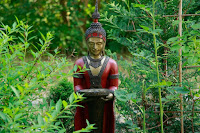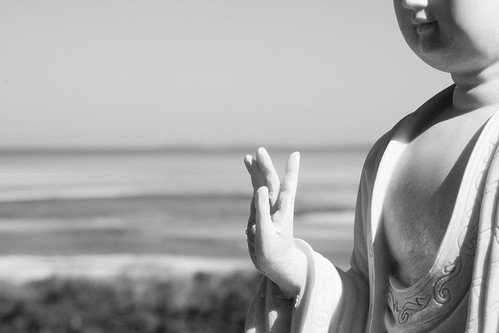 |
Garden Buddha, Do Am Sah, Falenica, Poland.
Photo by Mark O'Leary |
This is a repost from a blog I have begun reading called "Wake Up and Laugh." The blog is on my "probation" list, that is, I'm still checking it out to see if I want to subscribe to it via my news reader. Check out this post. Tell me what you think. Maybe subscribe to it yourself if you like it. I'll repost Part 2 when it comes out.
INSPIRING YOURSELF TO PRACTICE by Won-Hyo Seunim
For countless eons all Buddhas residing in Nirvana
have discarded their desires and trained arduously.
For countless eons sentient beings have transmigrated
throughout Samsara, not discarding their greed and desires.
The gate to the Pure Land is not blocked.
Yet few are those who enter;
most make their home among the three poisons.
Although the lower realms lack inherent power to seduce,
many enter therein.
The deluded mind values the five desires and the four elements
comprising the body as if they were jewels.
As this is the case, is there no one longing
to retire to the secluded mountains to practice the Way?
Enmeshed in desire, folks don’t go there.
Although you don’t take refuge in the mountains to cultivate your mind,
strive wholeheartedly to perform wholesome actions.
If you can renounce pleasure,
you will be as trusted and respected as the sages.
If you can undergo that which is difficult,
you will be as respected as the Buddha.
Those who greedily seek after things join the ranks of demons.
Those who give out of compassion are the disciples of the Dharma King.
(This post was also published on purelandway.wordpress.com: a blog specifically about Pure Land Buddhism)










